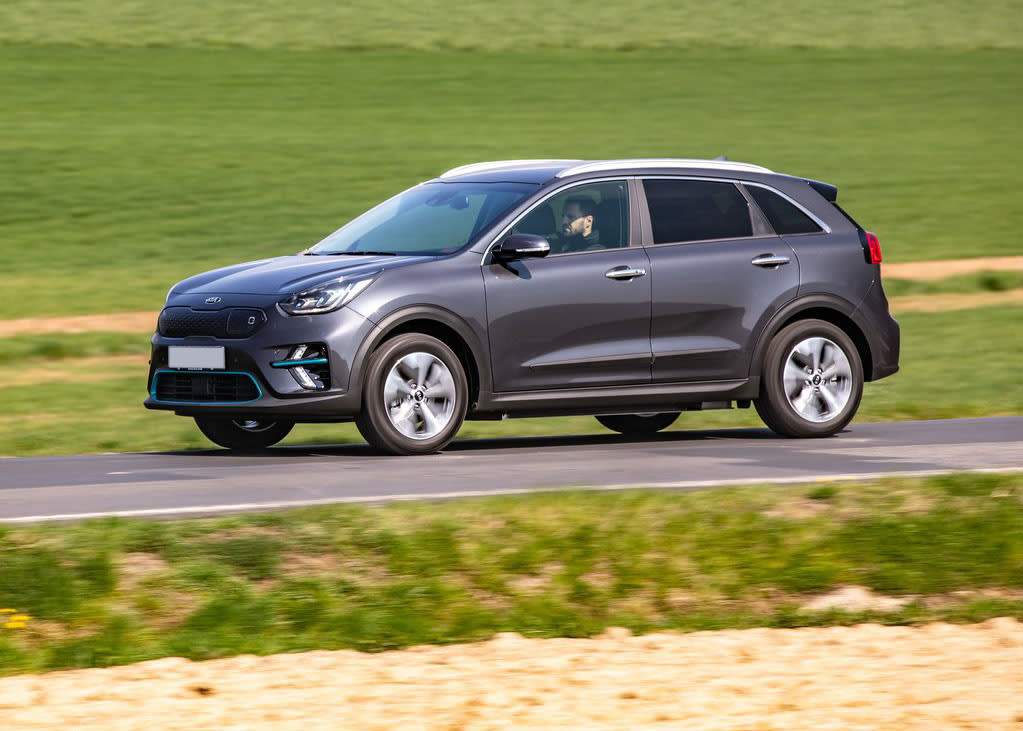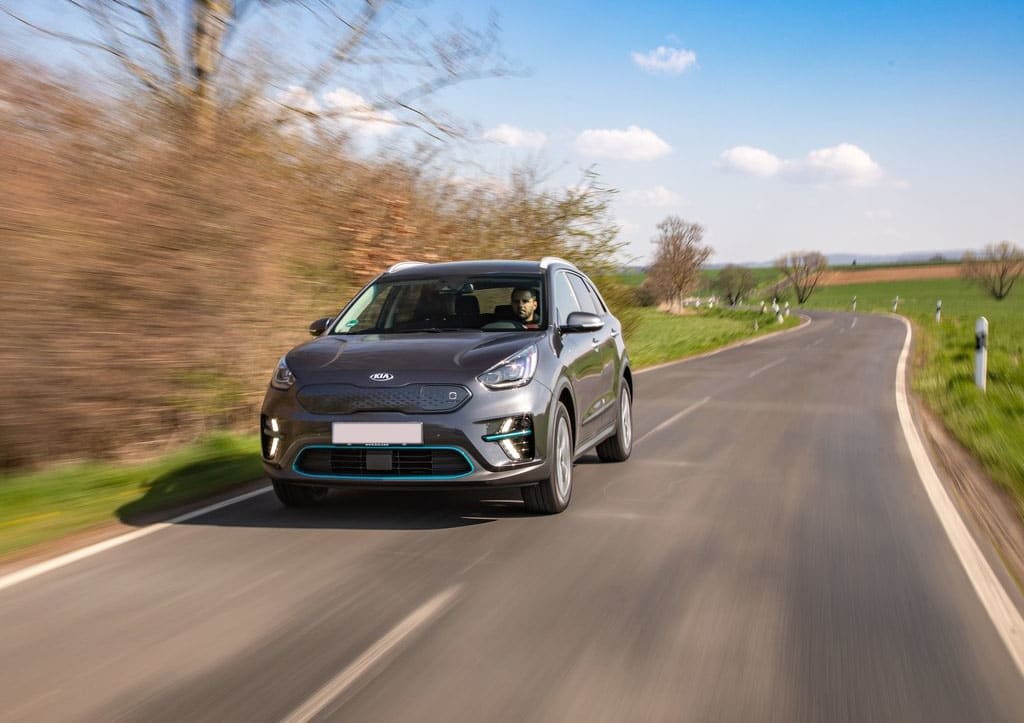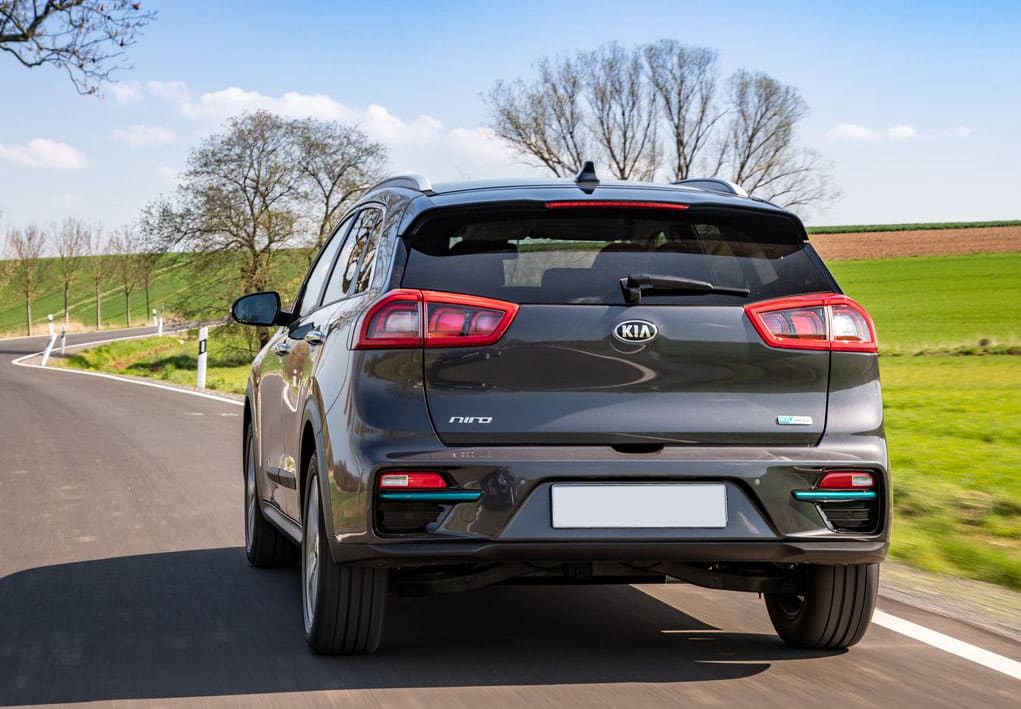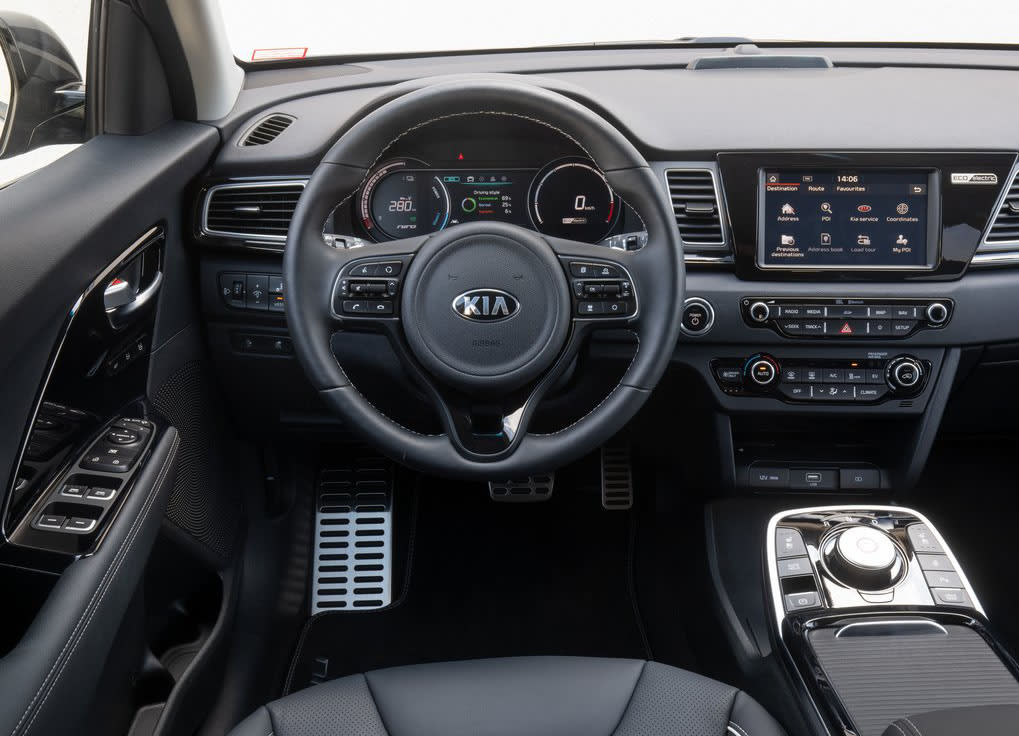
Kia e-Niro Review

Introduction
When the Kia Niro was launched in 2016, it was a fairly run-of-the-mill compact SUV. Even the hybrid powertrain wasn’t that remarkable. But little did we know that with the petrol engine removed, the little Niro would become one of the best electric cars on the market today. The all-electric e-Niro looks relatively similar to its hybrid siblings, with the blanked-off grille providing the only real clue to its green credentials. Most importantly, though, it adds a long and achievable electric range to the standard Niro’s family-friendly talents – and that puts it at the top of the electric class.
Review Sections
Select's rating score* - 4.4 / 5
At a Glance
If you want to switch your family wheels to electric power without sacrificing any practicality, the e-Niro is the car for you. A big boot, solid interior and good refinement make it a brilliant family runabout, and there’s no shortage of on-board tech to make life that little bit easier. This is one of the few electric cars that isn’t just for early adopters and company car drivers; if your lifestyle suits, it’s a genuine alternative to a petrol- or diesel-powered family car.
Or at least it is if you go for the long-range powertrain, which not only provides up to 282 miles of zero-emission running between trips to the charging point, but also offers an extra 60-odd horsepower. That means you have to go for one of the two most luxurious trim levels, but that’s no hardship. Not when leather upholstery, satellite navigation and heated seats are all on the menu.
In fairness, the entry-level ‘2’ model is hardly spartan. It still comes with a touchscreen, 17-inch alloy wheels and parking sensors, but you have to make do with the “mid-range” powertrain, which will only manage 180 miles between charges and suffers from a shortfall in performance. Better to stick with the long-range ‘3’ and ‘4+’ models.
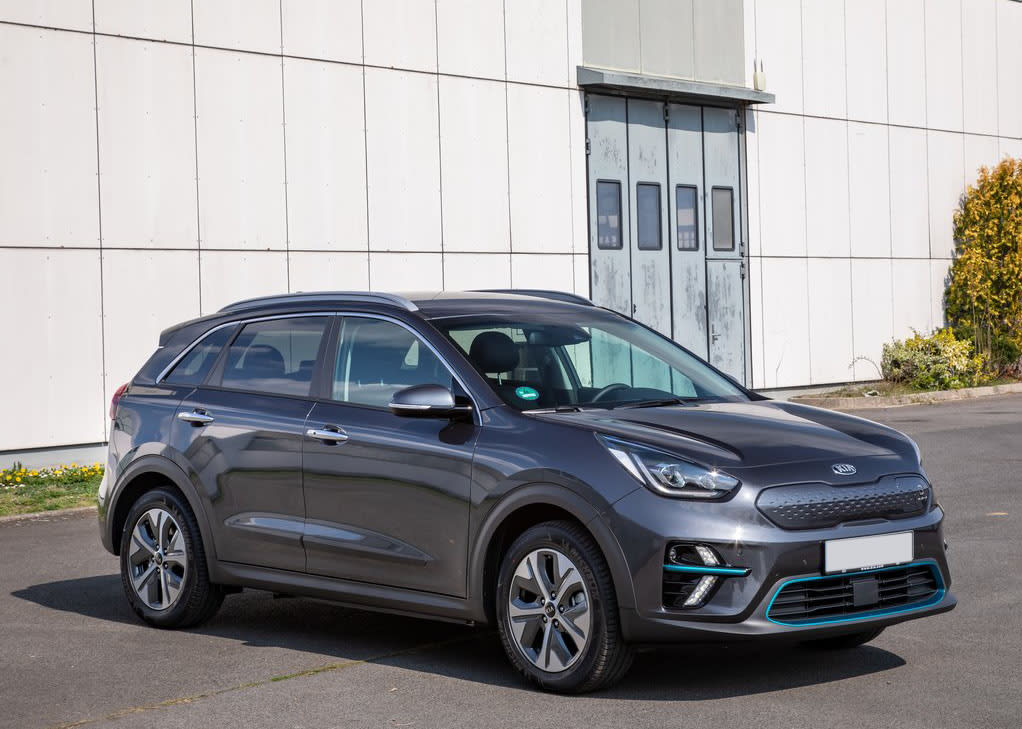
Key Features
Aside from the electric powertrain that draws people into this car, the e-Niro holds your attention with a distinct sense of modern normality. That means you get everything you could possibly want in terms of technology and equipment, but it comes in a solidly built, unassuming package.
We're big fans of the infotainment system, which is arguably more about function than form, but there’s nothing wrong with that. It means although the graphics aren’t up there with the snazziest designs on the market, it’s clean and simple to use – and that’s much more important. The digital instrument display is good, too, and wireless charging in high-spec cars will prove handy for anyone with a compatible phone.
There are more subtle features, too, such as the charge indicator on the dash that lets you see the car’s charge level the moment you look at it. The little lights give you all the information you need from a single glance at the windscreen. And if you go for a ‘3’ or ‘4+’ version, you’ll get the app that tells you all these things without leaving your sofa. It’ll also let you check whether you locked the doors if you’re one of those people who forgets all these things the moment they turn their back on the car.
Performance & Drive
When you choose your e-Niro, you get a choice of two different all-electric powertrains, which offer differing amounts of range, as well as different power outputs. Performance and range figures aside, neither powertrain has a vast impact on the driving experience, but there’s a clear favourite nonetheless.
Running Costs
Emissions
Of course, the biggest advantage of an electric car is the lack of emissions mean there’s a comparative lack of company car tax. If you’re getting one of these on your employer’s account, you’ll find a tax rate of just one percent applies for the 2021/22 financial year. One percent. On a car that only costs about £33,000 to buy outright.
Interior
If you thought well-built cabins were the reserve of the German brands and premium manufacturers, the e-Niro is proof to the contrary. Everything is bolted together with impressive quality, but Kia has also ensured the materials are up to scratch. Sure, some of the buttons feel a little too plasticky, but for the most part it’s solidly constructed and everything fits together beautifully. It’s easy to trot out the ‘Volkswagen-esque’ line, but the e-Niro surpasses the German brand in some ways – it’s that good.
And it looks good, too, if a little on the dark side. Everything is trimmed in dark, drab tones, but it’s smartly styled in an inoffensive kind of way. In short, it isn’t particularly inspiring, but it does the job and it won’t break or creak on you. It’s remarkably solid. And it’s comfy, too, with decent seats and a good driving position, as well as a logically laid out dashboard that means you don’t have to reach into inaccessible nooks and crannies for essential buttons.
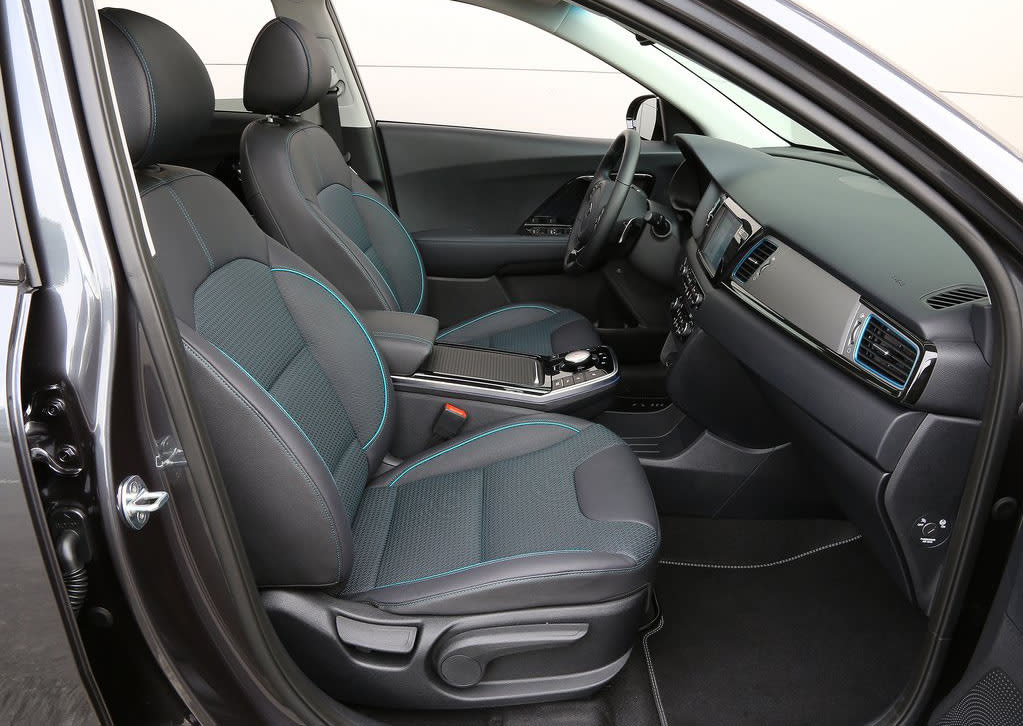
Technology
It isn’t just the electric powertrain that steals the tech headlines when we talk about the e-Niro. Slap-bang in the middle of the dash is a touchscreen with Kia’s latest-generation software, and it’s a corker – even in basic eight-inch guise. Simple to use and logically laid out, it’s a brilliant system for those who don’t have a degree in computing. So many companies over-complicate their touchscreens, but Kia has shied away from the techno-babble approach.
Practicality & Boot Space
Despite being a relatively small SUV, the e-Niro is a perfectly practical family option. Because of the battery layout, the e-Niro has 451 litres of boot space compared with the 324 litres you’ll find in the back of the plug-in hybrid. As well as being more capacious than the plug-in Niro, the e-Niro also has a bigger boot than the Volkswagen T-Roc, Nissan Qashqai and Ford Focus – all cars that have no need for an enormous lithium-ion battery.
Fold the rear seats down and the boot swells further still, and if you fill it to the rafters you’ll find a total of 1,405 litres behind the front two seats. But there’s more to family life than luggage, and the e-Niro accommodates for that with big door pockets and a sensibly sized glove box, as well as some coverable cup holders that can either support your flat white or hide your loose change from sight.
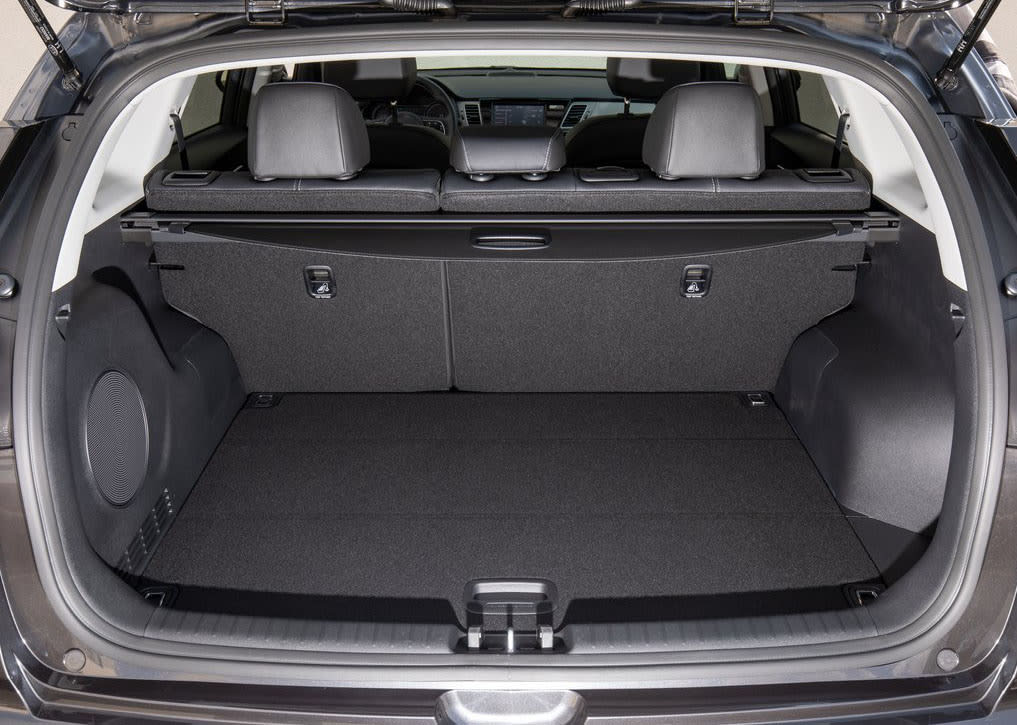
And there’s space for human beings, too, with bags of room in the front and plenty of legroom in the back. The headroom is good across the board, as you’d expect from an SUV, and although stuffing three adults into the rear bench might get uncomfortable after a little while, it’s doable for shorter journeys.
Safety
As has become the norm for family cars in recent years, the e-Niro earned a five-star Euro NCAP crash test score – a result shared with the hybrid versions of the Niro – although the data is slightly confusing. That’s because the Niro has two scores on the Euro NCAP website, with a four-star result for cars without the driver assistance package. Cars with the extra equipment, which comes as standard in the UK, get a five-star score.
That means all UK cars have a five-star rating, thanks in part to the host of safety gadgets that come as standard. All variants come with autonomous emergency braking that automatically slams on the anchors if it detects an impending collision, as well as lane-keeping assistance and a system that helps to keep the car centred in its lane. High-end versions also get blind-spot monitoring that alerts drivers to the presence of vehicles in the hard-to-see areas over the driver’s shoulders.
All that comes alongside the more conventional safety equipment, such as anti-lock brakes, tyre pressure monitoring and a host of airbags. The car also comes with Isofix child seat mounting points and a system that flashes the hazard lights in the event of an emergency stop.
Options
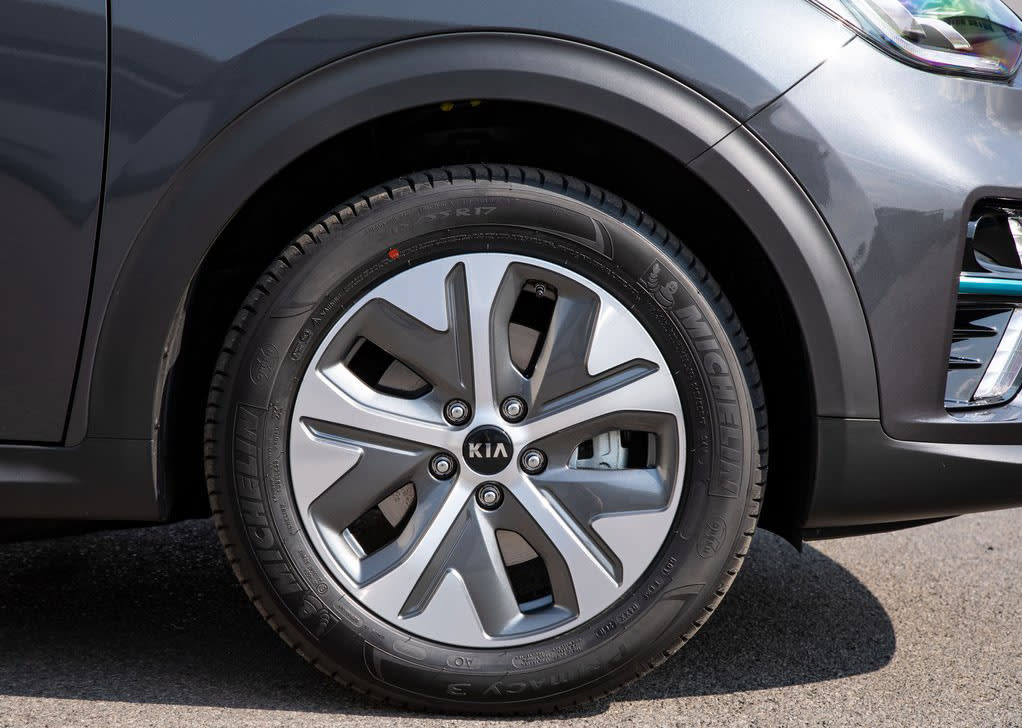
That car gets an eight-inch touchscreen infotainment system, as well as a seven-inch digital instrument display, rear parking sensors and a reversing camera. And that’s in addition to the Apple CarPlay and Android Auto smartphone integration systems that come as standard, giving drivers access to some phone apps and functions while behind the wheel.
Stepping up to the ‘3’ model gets you leather upholstery, heated front seats and an electrically adjustable driving seat, as well as a wireless phone charger and satellite navigation. The car also gets a larger 10.25-inch touchscreen infotainment system, which comes with the UVO Connect app-based connectivity system. That means customers can keep tabs on the car’s battery level, as well as finding where they parked and checking the doors are locked.
Finally, the ‘4+’ version comes with some extra luxuries, including an eight-speaker JBL sound system and heated outer rear seats to match those in the front. The top-spec car also gets front and rear parking sensors, as well as ventilated front seats.
But as well as changing the amount of equipment on offer, different versions of the e-Niro offer different battery capacities and power outputs. The basic ‘2’ comes with the entry-level 136hp electric motor and the 39kWh battery pack that provides up to 180 miles of driving on a single charge.
If you go for the ‘3’ or ‘4+’ variants, however, you’ll get the larger 64kWh battery and the more powerful 204hp electric motor. That means you get up to 282 miles of range between trips to the plug, as well as a noticeable improvement in performance.
The ‘3’, therefore, is arguably the most appealing model in the e-Niro range, offering the long-range battery pack and high-performance motor, along with most of the goodies you want and need.
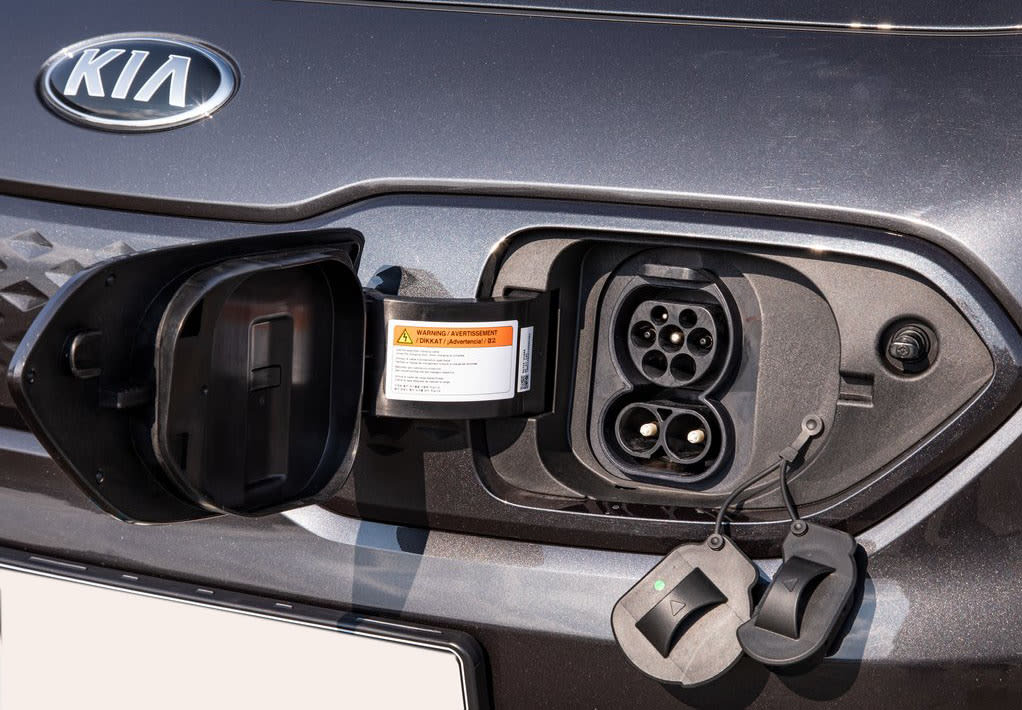
Rival cars
Naturally, the e-Niro is normally pitted against electric alternatives, including the ever-popular but talent-free Nissan Leaf, the surprisingly competent MG ZS EV and the recently updated Hyundai Kona Electric – a really rather formidable opponent. The new Volkswagen ID.4, Citroen e-C4 and Volvo XC40 Recharge are also among the more competent alternatives.
But the e-Niro isn’t just up against battery-powered cars. With its long range, it’s also capable enough to be compared with combustion-powered compact SUVs, such as the Volkswagen T-Roc, Ford Puma and the Mazda CX-30 – all of which are great cars in their own right. And slightly more conventional ‘car-sized’ models are also in the line of fire, with cars such as the Ford Focus, Volkswagen Golf and Seat Leon all in the mix.
All these cars have their pros and cons – the petrol- and diesel-powered alternatives in particular are more expensive to run but boast the extra flexibility provided by their fuel types. That said, though, electric infrastructure and technology is constantly developing, so the gap will close.
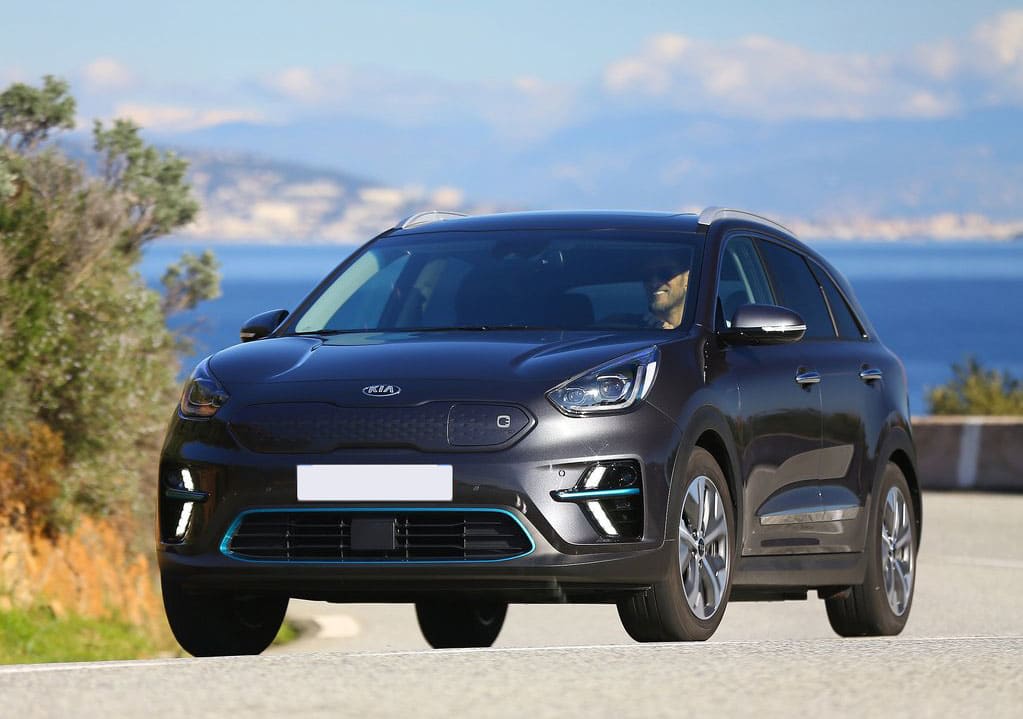
Whatever, the nub of the matter is few rivals do what the e-Niro can do; easily carting a family around in comfort and silence without burning a drop of petrol or diesel. It’s a bit of a jack-of-all-trades, but that’s no great criticism when you want a family car that will slot into your life with ease. The limitations of electric powertrains aside, the Kia has very few weaknesses.
Verdict & Next Steps
The e-Niro was one of the first affordable electric cars to challenge petrol- and diesel-powered vehicles, and it remains one of just a handful to fit that brief. Not only is it a practical, roomy family car, but it has plenty of range for all but the longest journeys. Admittedly, it isn’t the most exciting car on the market, but if you’re looking for cheap-to-run, eco-friendly family wheels and you aren’t planning any particularly lengthy trips – or you have another car for those journeys – then the e-Niro has to be right at the top of your shortlist.
Where to next?
View latest Kia e-Niro car leasing deals - from just £288.89 per month inc VAT**
Looking for a great leasing deal? Check out our incredible range of car lease deals
New electric SUV? Read our latest Car Reviews and find the right model for you
Want to know more about leasing? Take a look at our comprehensive Leasing Guides
Interested in everything motoring? Why not catch up on all the latest Car Leasing News.
*Score based on Select’s unique meta score analysis, taking into account the UK’s top five leading independent car website reviews of the Kia e-Niro
**Correct as of 28/03/2021. Based on 9 months initial payment, 5,000 miles over a 36 month lease. Initial payment equivalent to 9 monthly payments or £2599.99 Ts and Cs apply. Credit is subject to status.
